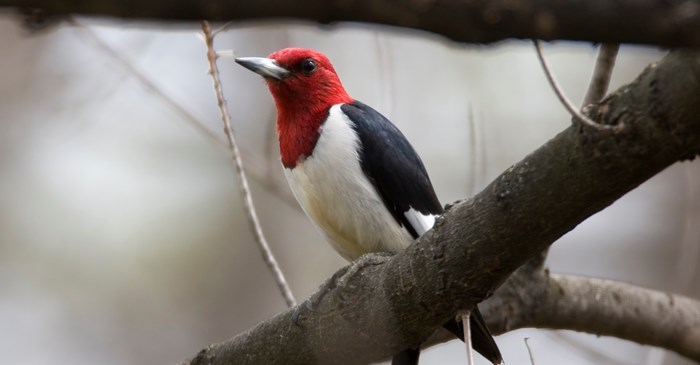As birds prepare to migrate, so begins the journey of the Red-headed Woodpecker. Well, at least some of them will be taking off for warmer climes. These birds are typically found in open forests, raising their families through a wide swath of the U.S., ranging from east of the Rocky Mountains to the Atlantic coast. Woodpeckers that summer in the upper Midwest, though, will make their way south in the winter for better food opportunities.
The Red-headed Woodpecker has captivated many hearts for generations, their striking plumage inspiring many to take up birdwatching. For the Cherokee, the Red-headed Woodpecker was used as a symbol of war. And if you had a chance to observe their defensive moves during the nesting season, you would see why. Males will call and drum on a variety of surfaces with their beaks, reaching 19–25 beats per second. They will even attack the nesting sites of other bird species.
Meanwhile, as the pairs go about their business choosing a suitable nesting site, they may make use of a male’s winter roost, or he may hollow out a new tree cavity. In either case, he will show it to his mate and she will signal her approval by tapping on the tree. They will go on to raise up to two broods.
They are best known, of course, for hammering away on trees with their strong beaks in pursuit of insects. But they are also adept at catching bugs in flight, and will hide seeds and nuts in the bark and crevices of trees. They’ve even been known to stash away a grasshopper or two!
As the weather cools and the supply of insects starts to dwindle, you may see these birds visiting feeders more frequently. To attract the Red-headed Woodpecker to your yard, we recommend hanging the feeder from a tree branch and filling it with Lyric Woodpecker Mix to help them stay fueled and well-nourished with the fruits, nuts and seeds they so love to eat.
